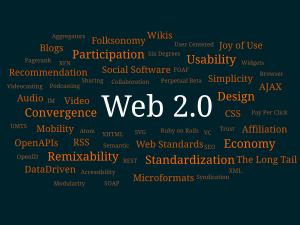
Image via CrunchBase
I am a strong supporter of Open Source Software and a proponent of the importance of open source in cloud computing. It is my strong opinion that open source will empower the customers giving them access to the software even after the company behind the product goes out of business. In this regard, I have even called Open Source as a SaaS endgame. Even though Open Source plays a predominant role in empowering the customers, there are some vendors who use open source as a pure marketing ploy. These vendors use open source to entice users to their product and as soon as they gain reasonable traction, they stop supporting the open source version of the product.
In the early SaaS days, we saw how Activecollab abused the open source spirit. In recent days, the cloud vendor Enomaly Inc. has been facing the wrath for running away from the open source version of their Elastic Compute Platform (Enomaly ECP). Unlike Activecollab and few others who unabashedly abused the spirit of open source, Reuven Cohen, Founder and CTO of Enomaly Inc., has been vocal about their involvement in open source. In fact, I found him to be one of the strong voices in support of open source and open cloud efforts. Recently, one of the Clouderati, Sam Johnston, noticed that Enomaly has stopped supporting the open source version of their platform.
It doesn’t help my sentiment either that every last trace of the Open Source ECP Community Edition was recently scrubbed from the Internet without notice, leaving angry customers high and dry, purportedly pending the “rejigging [of their] OSS strategy”. While my previous attempts to fork the product as Freenomalism failed when we were unable to get the daemon to start, having the code in any condition is better than not having it at all. In my opinion this is little more than blatantly (and successfully I might add) taking advantage of the Open Source community for as long as necessary to get the product into the limelight. Had they not filled this void others would certainly have done so, and the Open Cloud would be better off today as a result.
Today, Sam Johnston startled everyone in the Clouderati with an announcement that he is forking the community version of Enomaly ECP with some additional security fixes. The new project called OpenECP is released under the Affero General Public License v3 or similar. The Open Elastic Computing Platform (OpenECP) is currently under Version 4.0 Alpha and provisionally tested on Debian GNU/Linux 5.0. In short, Sam Johnston has done what CentOS has done to RedHat Enterprise Linux. Take the source code, rip up the trademarks and release it under a different name.
My initial reaction to this news was that Sam is mad but this is a brilliant move. Frankly speaking, this fork is a result of some personal bickering between Sam Johnston and Reuven Cohen (as evidenced by their public tweets). Personally, I know both of them ŌĆ£equally wellŌĆØ through Twitter and I have absolutely no comment on the tensions between them. I am approaching this issue from the point of view of open source licensing and what this move by Sam means to the customers. From what I scraped out from Twitter and various online forums, Enomaly has decided to not work on the open source edition for some tactical reasons from their business strategy point of view. Even though they have promised to bring the open source edition back in few months, there is absolutely no guarantee. Under such circumstances, this fork ensures that the community edition continues to live on even if Enomaly decides to not revive it. It ensures that the current users of the community edition are not left in a lurch. However, there is no guarantee that the development of the open source software will continue beyond this point. On a related note, I strongly recommend you read the post on 451 GroupŌĆÖs CAOS Theory and my response to it.
To be fair to Enomaly, I would like to point out that the current proprietary version of Enomaly ECP has some additional features like vlan, metering, etc.. Plus, it was directed towards service providers who want to buy it straight from the software vendor. Though fork is fun and easy, ultimately the hardest job was done by the original vendor by spending thousand of hours on the product. But, this episode should serve as a warning to software vendors who want to take the open source route. If they take the path of open source, they should stick to it all the way through. But if they try to use it just as a shortcut for gaining users, they will lose control of their product and may even face a potential danger of losing their business.







